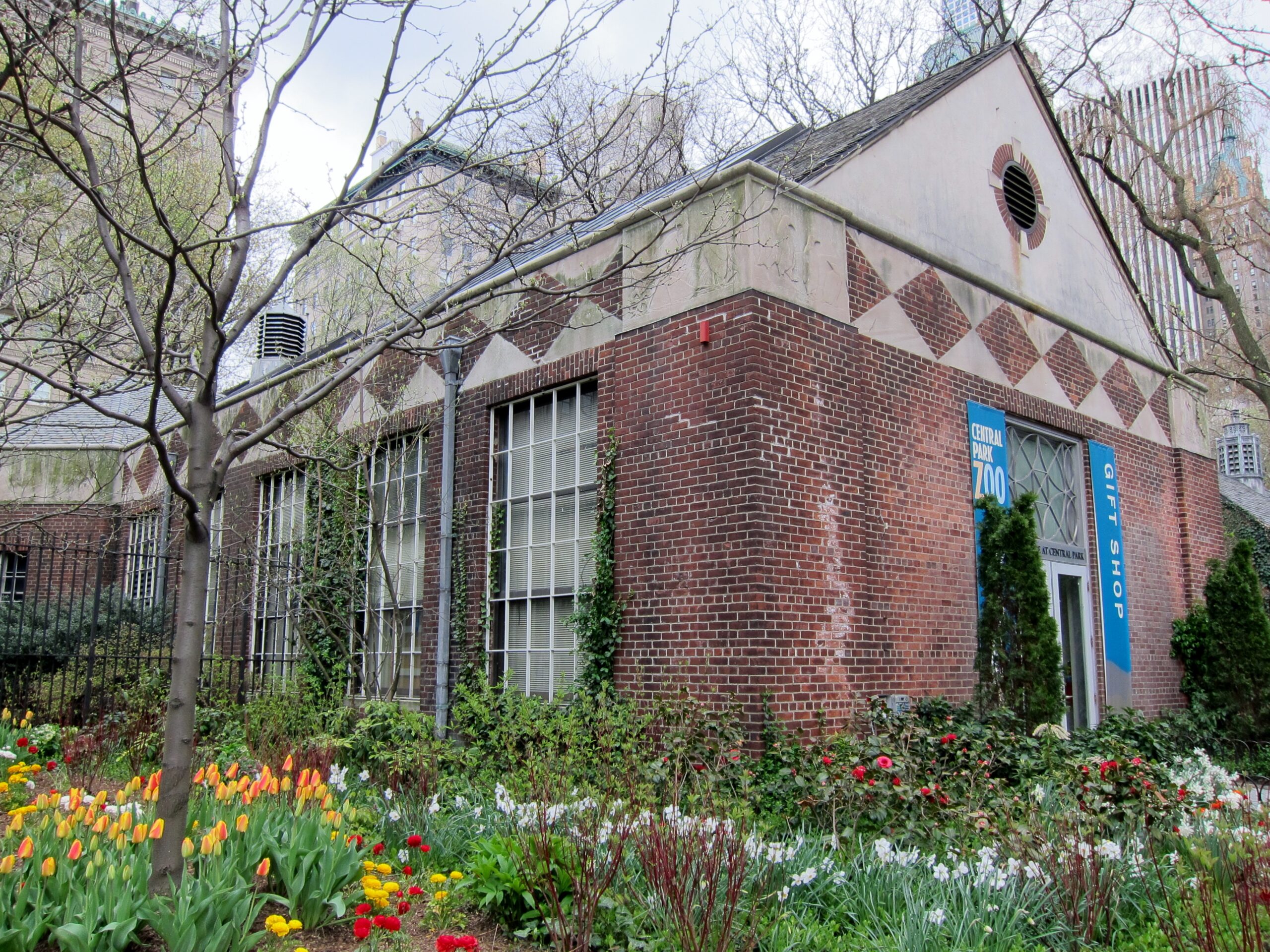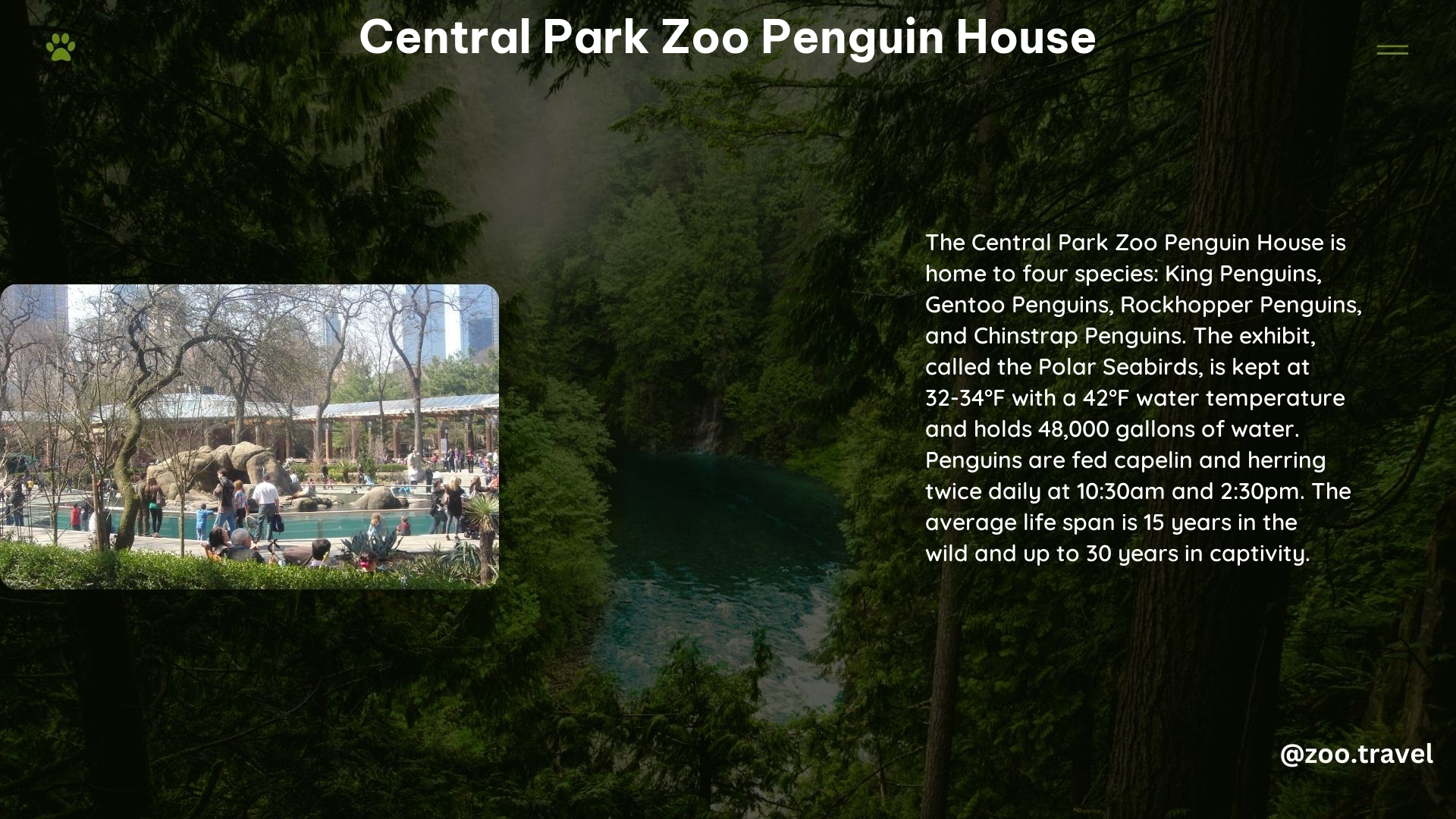The Central Park Zoo Penguin House is a must-visit destination for anyone fascinated by the charming and captivating world of penguins. This exhibit showcases four distinct species of these flightless seabirds, each with its own unique characteristics and behaviors. From the majestic King Penguins to the diminutive Chinstrap Penguins, the Penguin House offers a rare opportunity to observe these remarkable creatures up close and learn about their fascinating lives.
Penguin Species at the Central Park Zoo

The Central Park Zoo Penguin House is home to four species of penguins:
-
King Penguin (Aptenodytes patagonicus): The second-largest penguin species, known for their bright orange ear patches and white to orange belly. They can weigh between 11 and 16 kg and dive deeper than any other penguin species.
-
Gentoo Penguin (Pygoscelis papua): Recognizable by their distinctive yellow-orange beaks and white bands above each eye. They can reach just over 2 feet tall and weigh about 12 lbs.
-
Rockhopper Penguin (Eudyptes chrysocome): A small-sized group of penguins known for their black-grey upper parts and bright yellow eyebrows. They can reach 1.5 to 2 feet in height and weigh between 5-11 lbs.
-
Chinstrap Penguin (Pygoscelis antarctica): Smaller than Gentoo penguins, identified by the black strap of feathers under their black beaks. They can reach 2 feet in height and weigh about 9 lbs.
Penguin Habitat at the Central Park Zoo

The Central Park Zoo Penguin House is designed to mimic the natural habitat of these remarkable birds. The exhibit is kept at a temperature of 32-34°F (0-1°C) with water at 42°F (6°C), providing the ideal environment for the penguins to thrive. The tank holds an impressive 48,000 gallons of water at a depth of 12 feet, and the water is filtered at a rate of 800 gallons per minute, ensuring the penguins have a clean and well-maintained habitat.
Penguin Feeding at the Central Park Zoo
Visitors to the Central Park Zoo Penguin House can witness the penguins being hand-fed by their keepers twice a day, at 10:30 a.m. and 2:30 p.m. The penguins’ diet consists primarily of capelin (a type of smelt) and herring, providing them with the necessary nutrients to thrive in captivity.
Penguin Life Expectancy and Conservation Efforts
Penguins in the wild have an average lifespan of 15 years, but in captivity, they can live up to 30 years. The Central Park Zoo is actively involved in conservation efforts, working to protect these remarkable creatures and their habitats. By educating visitors and inspiring the next generation of zoologists and conservationists, the zoo plays a vital role in ensuring the long-term survival of these flightless wonders.
Visiting the Central Park Zoo Penguin House
The Penguin House is part of the Polar Circle exhibit at the Central Park Zoo, which includes both indoor and outdoor areas. Visitors can observe the penguins during their daily feedings and learn about their unique behaviors and adaptations. The zoo is open year-round, making it a perfect destination for nature enthusiasts and families alike.
Conclusion
The Central Park Zoo Penguin House is a captivating and educational experience that allows visitors to witness the remarkable lives of these flightless seabirds. From the majestic King Penguins to the playful Chinstrap Penguins, the exhibit offers a unique opportunity to learn about the diversity and conservation efforts surrounding these beloved creatures. Whether you’re a seasoned zoo enthusiast or a first-time visitor, the Penguin House is sure to leave a lasting impression and inspire a deeper appreciation for the natural world.
References:
– Central Park Zoo Penguin Feedings
– Central Park Zoo Penguins
– Penguin Exhibit Video
– Polar Circle Exhibit
– Central Park Zoo Animals
